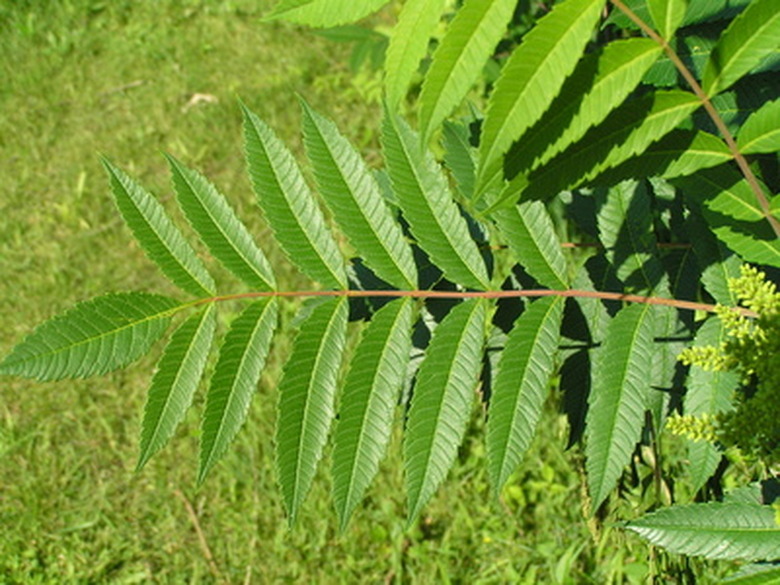Compound Leaf Identification
Compound leaves' features are key to identifying plant species. As the name suggests, compound leaves are more complex than simple single-bladed leaves. Compound leaves are typical on many herbaceous plants, shrubs and trees across North America.
Components
Two separate components make up most compound leaves. The rachis is one, and the combined attached leaflets the other. The rachis resembles a long stem, or an elongated central leaf axis. Rachis either grow a number of leaflets that attach directly to the rachis by their stalks, or grow off another shorter axis from the rachis itself, depending upon the species.
- Compound leaves' features are key to identifying plant species.
- The rachis resembles a long stem, or an elongated central leaf axis.
Types of Compound Leaves
Compound leaves occur in a variety of forms. When at least three leaflets appear joined at a central spot at the end of a rachis, radiating out like fingers on a hand, the term "palmate" applies. Buckeye trees and horse chestnuts are common tree examples. When leaflets grow in two rows opposite each other on the centralized stalk, the leaf is pinnately compound, such as walnuts, sumacs and hickories. Bipinnately compound leaves possess multiple side branches with numerous leaflets, such as the leaves of the Kentucky coffeetree. Tri-pinnately compound leaves are even more elaborate, with many rachises branching off the main axis holding leaflets; heavenly bamboo features these leaves, according to the Oregon State University Department of Horticulture.
Number of Leaflets
An important key to compound leaf identification in some species is the number of leaflets that grow from the rachis. In trees, such as ashes, the leaflet number often helps you pinpoint the species. Green ash, for example, typically has from five to seven leaflets on each leaf, according to the North Dakota State University. The closely related black ash usually features a leaf with between nine and 11 leaflets, allowing you to differentiate the foliage.
- Compound leaves occur in a variety of forms.
- Tri-pinnately compound leaves are even more elaborate, with many rachises branching off the main axis holding leaflets; heavenly bamboo features these leaves, according to the Oregon State University Department of Horticulture.
Rachis and Leaflet Length
Rachis length is another major identification point for compound leaves. Some can achieve lengths of more than 20 inches, according to the field guide "Trees of North America." Butternut, for instance, can have a rachis that grows to be 30 inches long. Others, such as the green ash, may be only 5 to 6 inches long.
The leaflet length becomes integral to compound leaf identification, especially when trying to distinguish similar trees. Measuring the leaflets from base to tip will help you determine identity. For example, on the shellbark hickory and the nutmeg hickory, two trees with similar leaflets, the former can grow to 8 inches in length, while the latter seldom get bigger than 5 inches.
Weeds, Shrubs and Flowers
Weeds, flowers and shrubs may also have compound leaves. Common shrubs, such as American elder, have pinnately compound leaves, while the well-known poison ivy has compound leaves immortalized with the "leaves of three, let them be" warning. Plants, such as the partridgepea, have pinnately compound leaves containing from eight to 15 pairs of opposite facing small leaflets, according to the Virginia Tech Weed Identification Guide.
- Rachis length is another major identification point for compound leaves.
- The leaflet length becomes integral to compound leaf identification, especially when trying to distinguish similar trees.
References
- North Dakota State University: A Guide to Deciduous Tree Knowledge
- Oregon State University: Plant Identification: Examining Leaves
- "Trees of North America"; C. Frank Brockman; 1996
